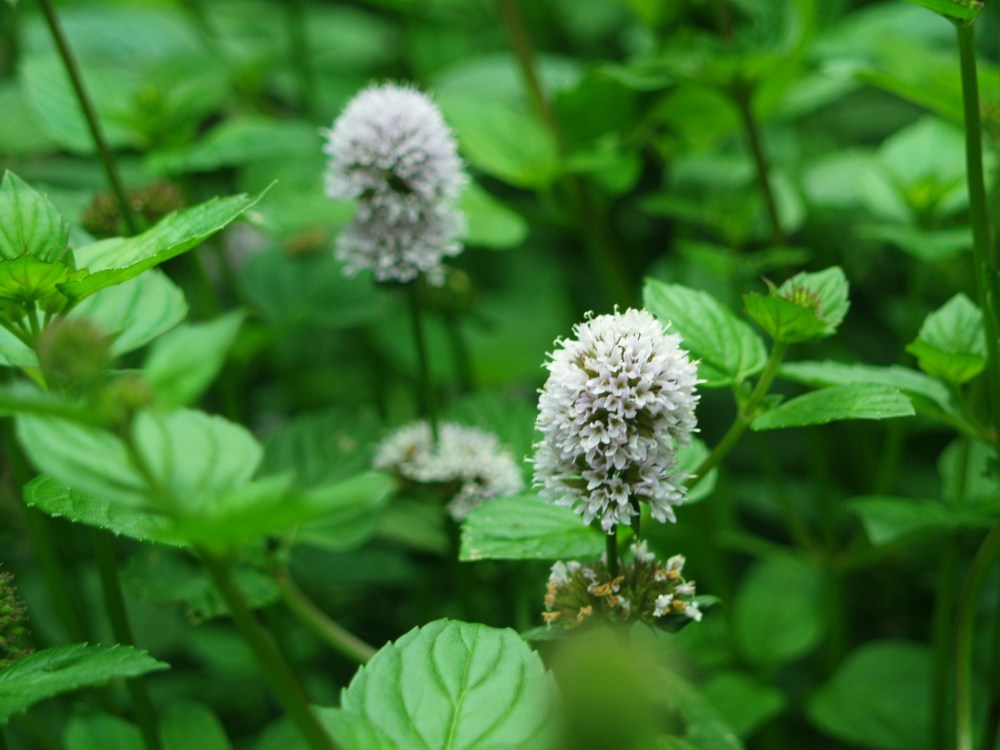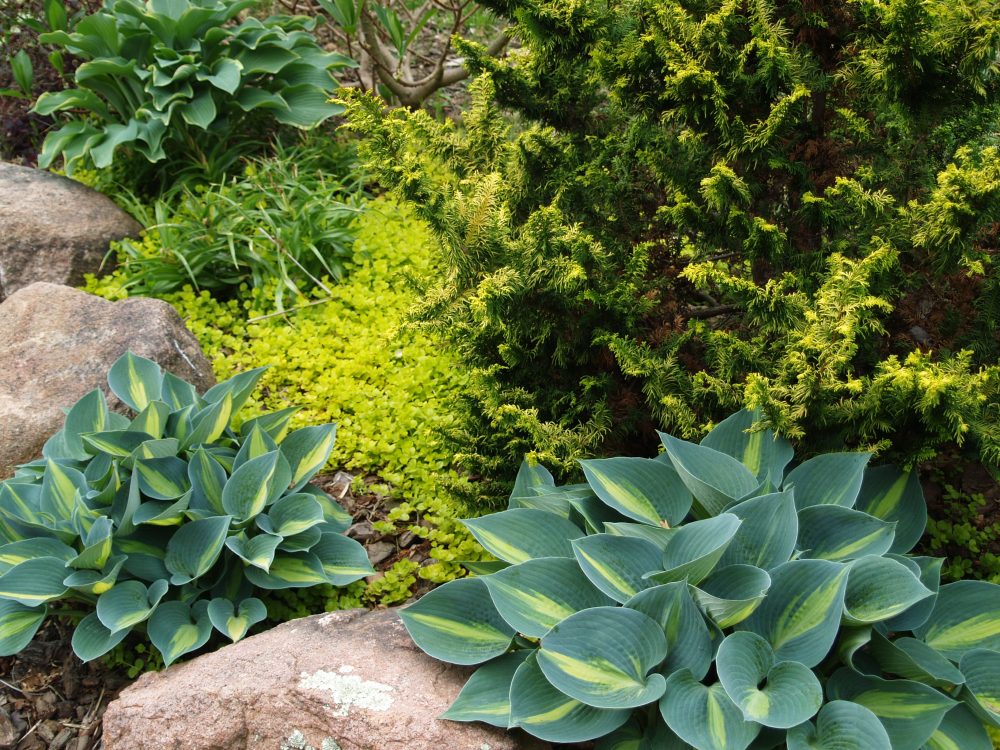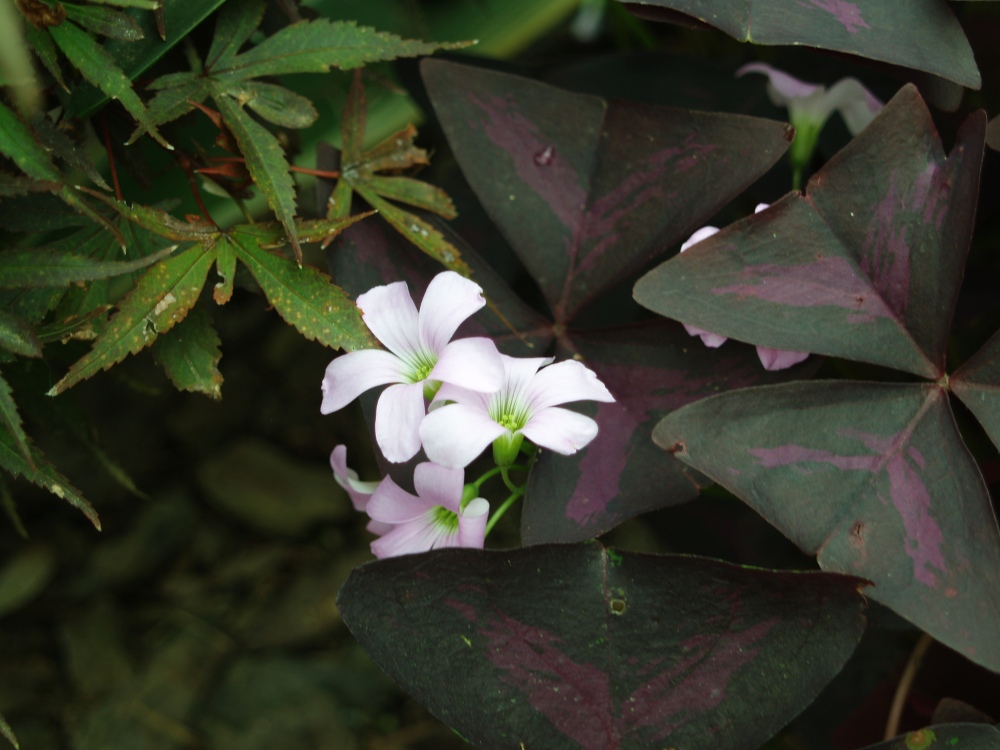I’ve been warned. You’ve heard, I’ve heard, I’m certain there’s not a single gardener who hasn’t heard horror stories about planting mints (Mentha). They run amok, overwhelming everything in their path, particularly in damp soils. I know, I know. So, what have I done? Well, I’ve planted a few varieties of mint, and not only that, I planted them in seasonally wet areas. It seemed like a good idea at the time, and in fact, in the few years since they were planted they’ve posed no problem at all.
I planted Chocolate mint (Mentha piperita, above) in a depression that channels stormwater runoff to a wet weather pond I’ve constructed at the rear of the garden. The low area runs between a large Southern magnolia and several smaller trees and evergreens so that there’s just a hint of sunlight at midday. Sometimes it’s very dry, and at other times rainwater from neighboring properties gushes over. The runoff eroded the bare soil before the mint was planted, and a few small plants were swept away before they had a chance to root. Thus far the mint has spread moderately, and actually more slowly than I’d like, but it’s on the way to doing the job that was intended. I suppose that someday I’ll curse the day it was planted, but it can’t be any harder to control than Houttuynia cordata ‘Chameleon’ and it smells a heck of a lot better.
‘Chameleon’ has foul smelling, but interesting mottled foliage with varying degrees of red, cream, yellow, and green. Once established it spreads with vigor. Too much, the gardener soon finds as houttuynia engulfs smaller plants (and some considerably larger). The gardener must be persistent in removing growth that strays beyond its bounds or it will root and become much more difficult to control. I planted a few plants along one of the garden’s ponds that eventually covered a much larger area than intended, and then it mysteriously began to sprout in other areas. I’ve pulled and sprayed to rid these areas, but occasionally I catch a small patch of houttuynia getting started again.
I’ve left one area of ‘Chameleon’ (above) to grow at the back of the wet weather pond, not far from the mint. This is at the rear of the garden, and it’s bordered by wetlands, cattails, and brambles so that every imaginable weed seed blows in. I’m hoping that houtuynia will be aggressive enough to smother other weeds that pop up, and if it and the mint get a little too rambunctious then I’ll have to figure a way to keep them tamed, or work to be rid of them.
The bright yellow Creeping Jenny (Lysimachia nummularia ‘Aurea’, below) grows energetically with a bit of shade and moist soil. With too much sun or in dry soil it bleaches and fades, but in part shade with some moisture it spreads readily though it rarely will overstep its boundaries or become a nuisance. A few times I’ve found the color to be too bright and irritating, but most often it complements the taller plants that it creeps beneath.
The yellow flowers of Creeping Jenny are barely distinguishable from the foliage, so it is grown only for it’s yellow foliage and creeping habit. The only concern that I’ve had with Creeping Jenny is that it must be pulled back occasionally in one area to keep it away from a low growing sedum. This is easily accomplished by tugging the stems every once in a while (and not frequently enough to call this a chore).
I was concerned before planting a dark purple leafed shamrock (Oxalis regnellii, above) by reports of its rampant growth, but in a few years it has barely spread, and I’ve been a bit disappointed that it hasn’t been more of a challenge to control. I’ve planted the shamrocks beneath large gold variegated agaves that are sunk into the ground in late spring and then brought indoors for the winter. I supposed that the contrast of yellow (gold) and purple would be a delight, but thus far the shamrocks have let me down by not filling to form a full carpet beneath the agaves. I’ve no doubt that there are gardeners who have their fill and more trying to keep shamrock in bounds, but whatever I’m doing is making this a much lower maintenance plant than its reputation. I crave more aggravation apparently, but perhaps in time shamrock will prove to be more troublesome.
Chameleon plant has roots that go to China and, if you leave even a fraction of an inch of root, it will sprout. Worst thing I ever planted in my garden.
I’ve had more than a few battles with Chameleon, and the small area where I’m allowing it to remain is on strict probation. One wrong move and I’m going after reinforcements to be rid of it forever.
Creeping Jenny has been a headache. I pull it out constantly. It’s planted near black mondo grass (love the color combo) but constantly threatens to over run it. I should have know better as previously I battled a tall lysmachia for years. I keep Mint in a large pot that stays out all winter and get chopped back a few times a summer. I’ve been tempted many times to grow ‘Chameleon’-there’s always tons of it priced very cheaply at garden club plant sales (wonder why?) and it is very lovely but I’ve actually resisted it’s charms knowing it’s bad rep.
Your photos are wonderful.
I know that I have more tolerance for aggressive plants than most gardeners. Of the ground covers listed here Creeping Jenny has been very mild mannered, and Chameleon the worst. There are very few plants that I’ve had my fill of, but Chameleon has been a bit much for me.
Ageratum is the only thing I’ve ever had to remove, and I have a feeling I’ll be removing it for a long time. My small yard keeps me in check in terms of metha–reluctantly, because I love it!
Hardy ageratum grows right up to the swampy back border of the garden, but it’s never crossed the line. Along the border there’s a strip of grass-like weeds between the wet weather pond and the ageratum, cattails, and brambles, and I’d happily give the area over to ageratums if I didn’t know the cattails and brambles would come along.